I work on Drosophila melanogaster and sometimes need to take pictures. After being unimpressed by a 5MP Nikon DS-Fi1 CCD camera attached to a Nikon SMZ800 scope, I began looking at ways to take pictures with a DSLR instead. I decided to buy a Nikon D5200 as they are not horrifically expensive, and I have my own D3200 (and D3100) so they are familiar to me. After reading around on this forum and elsewhere, I came across three options for connecting the D5200 to the SMZ800 (which already has a beam splitter). The options were a c-mount to f-mount adapter, a DD20NLT adapter and a VariMag II adapter. I settled on the VariMag II as it seemed to me to be the most complete system.
I have had everything set up for a few weeks now and after some learning I have produced a number of practice pictures, which I’ll link below. I would be interested to hear any suggestions about how I can improve the images.
To produce the images I took several shots with different focus (typically ~3-7) at between 1/100 and 1/25 shutter speed and ISO around 640. I sorted out the exposure in PS CS6 Camera Raw then stacked, aligned and blended them in PS.
I have come across a number of issues while doing this, though none has been insurmountable, I would be interested to know how others deal with similar problems:
- The design of the beam splitter for the SMZ800 means that the field of view pans when focusing. This proved to be a problem initially, but was solved completely when I realised how easy it is to align images in PS.
- There is a lot of chromatic aberration (purple/green fringing) visible in the images taken by the camera. There is often so much that the maximum correction for this in Camera Raw is not strong enough and I am having to do it manually after them images have been blended together.
- The images seem to be quite noisy to me. I don’t know if this is par for the course or if I should be aiming for less. I didn’t apply much noise reduction in Camera Raw and I think I should have done more, but I’m always scared of losing sharpness.
- It’s hard to get enough light onto the camera sensor. I’m using a fibre optic LED light source. Set to full, it produces a light so strong I can’t look at the white CO2 pad it’s shining on, but I still have to use what feels to me like a rather high ISO and low shutter speed. Ideally I would like to diffuse the light using tracing paper.
- I have not been able to produce any nice images at higher magnification than the ones shown below. This is due to lack of light and movement when I press the shutter release.
- A DSLR screen, even rotating one, is insufficient for focusing accurately. I’m going to connect the camera to a monitor.
Anyway, here are some examples of what I have managed to produce so far:
(+ some more examples here: http://www.flickr.com/photos/jonesci/se ... 025629963/)
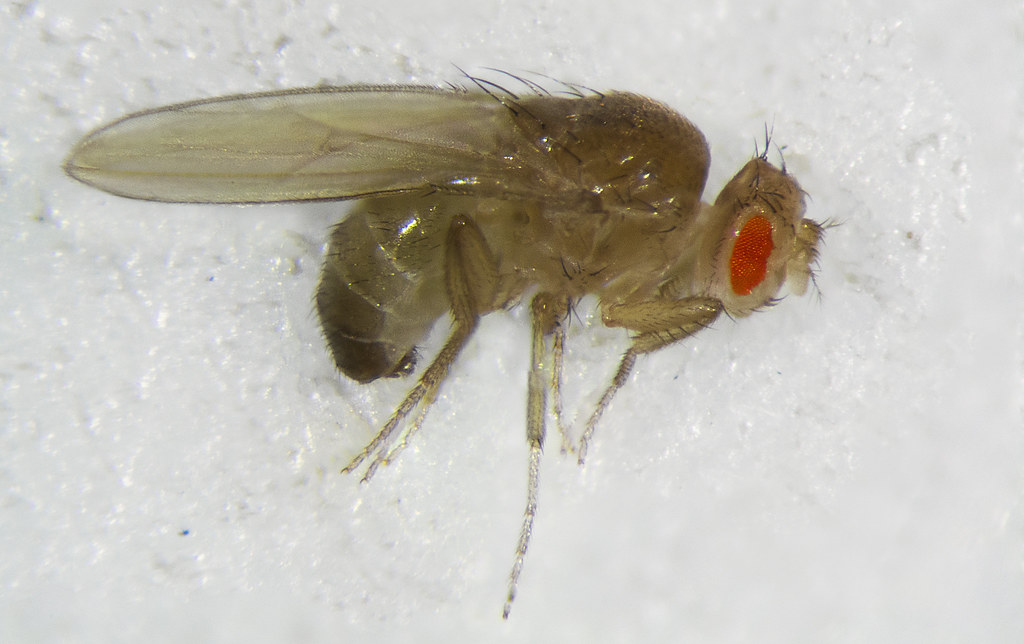
Drosophila melanogaster (y- B- cn-, male) by Chris_Jones., on Flickr
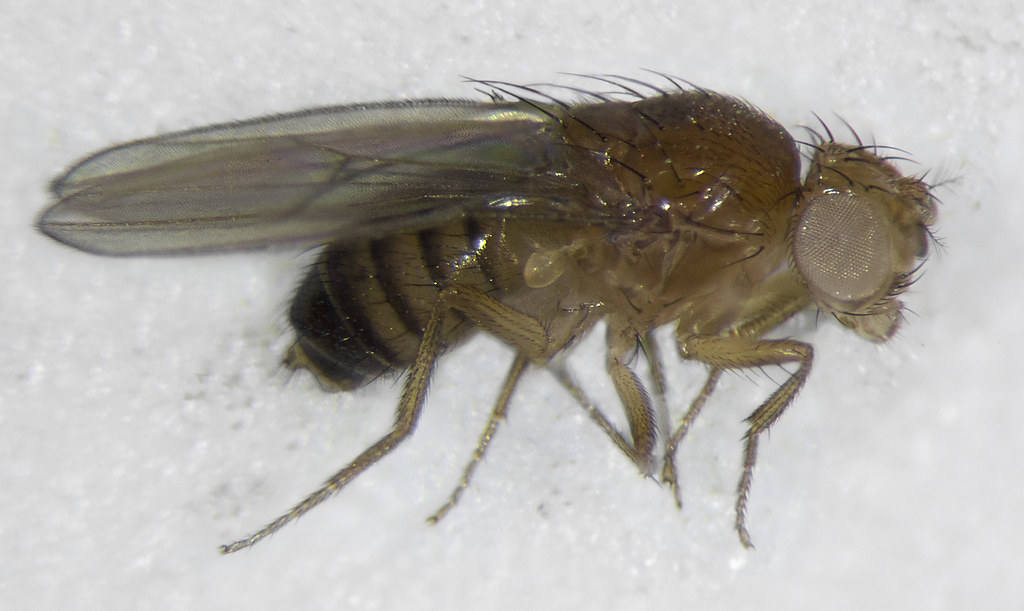
Drosophila melanogaster (w[1118], female) by Chris_Jones., on Flickr
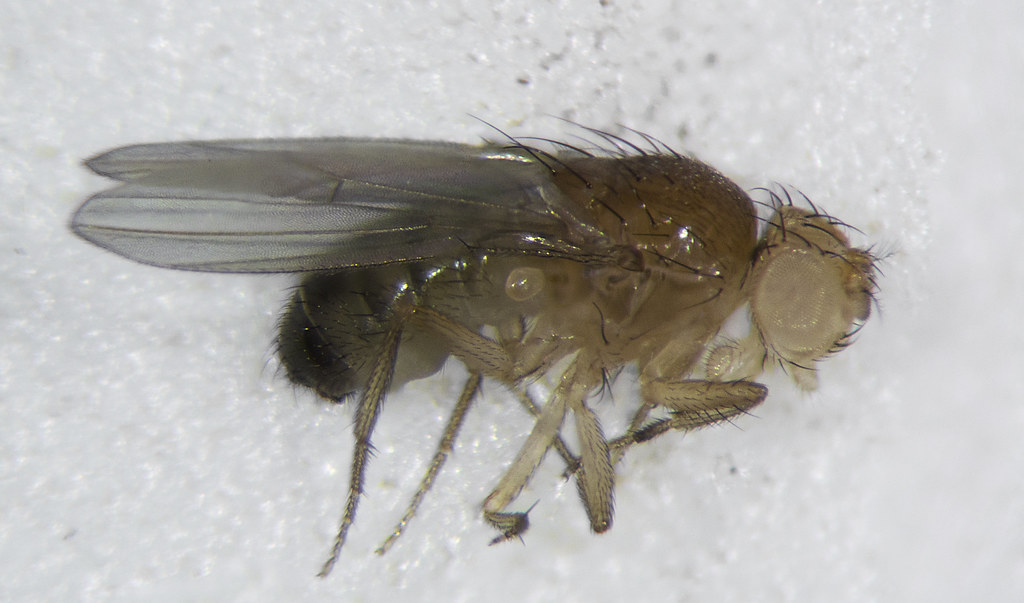
Drosophila melanogaster (w[1118], male) by Chris_Jones., on Flickr
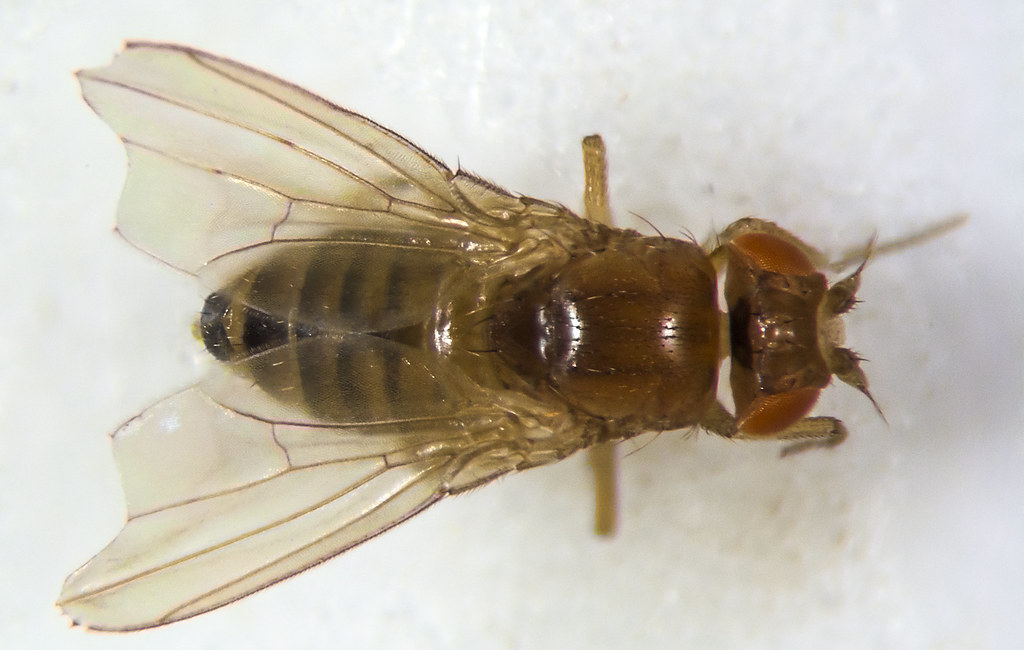
Drosophila melanogaster Serrate (Ser) phenotype by Chris_Jones., on Flickr
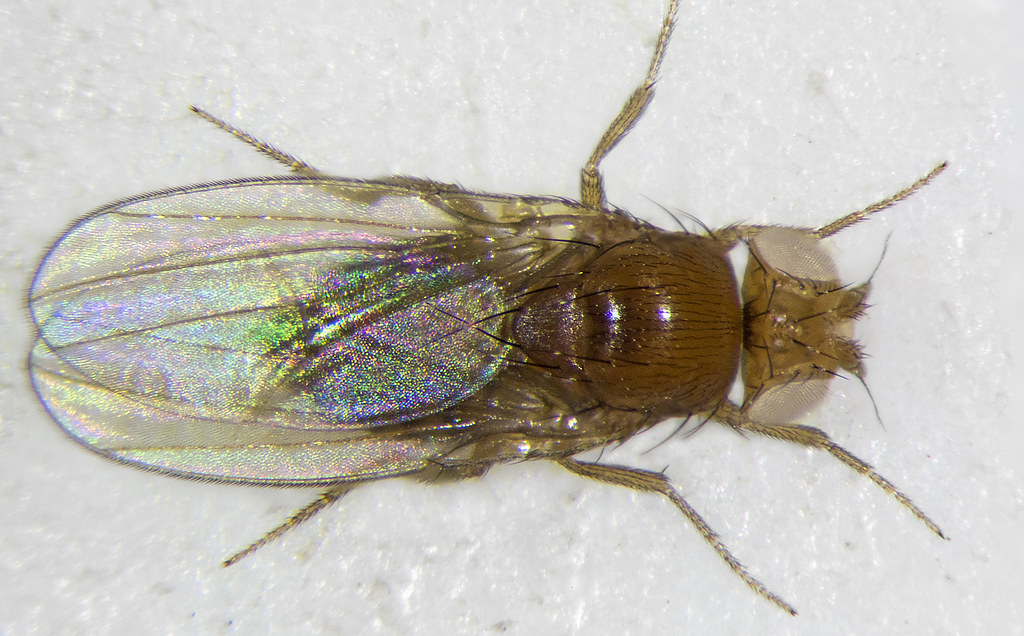
Drosophila melanogaster (w[1118], female, dorsal view) by Chris_Jones., on Flickr
This one is not a fly.
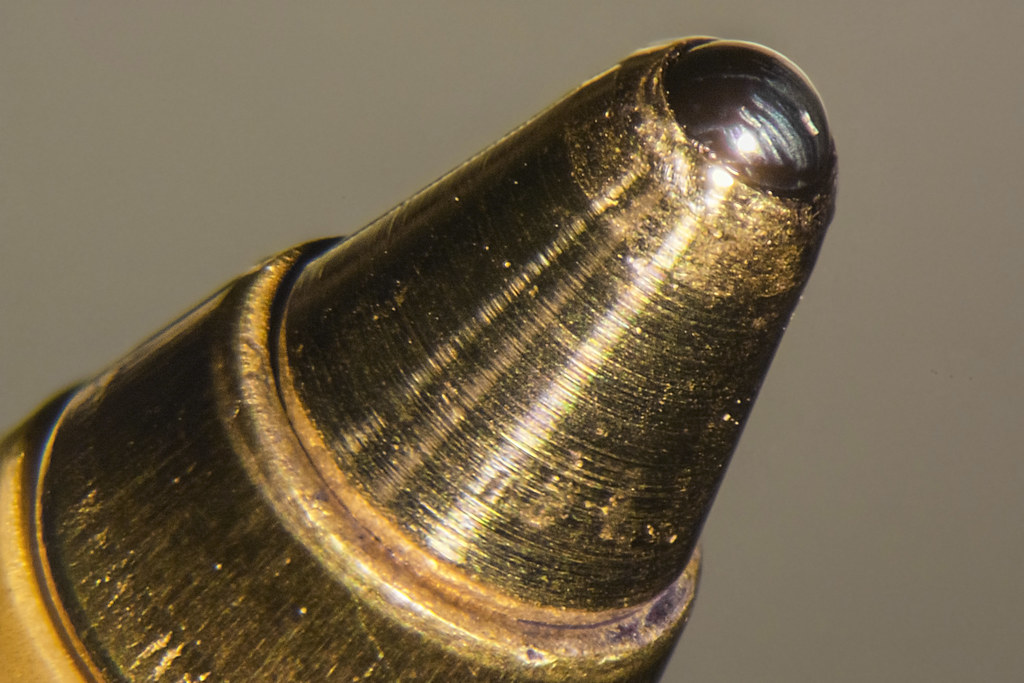
Biro by Chris_Jones., on Flickr
Overall I'm quite pleased with how these images have come out, they're certainly an improvement over the CCD camera, but I'm sure they can be improved further. Any suggestions?

